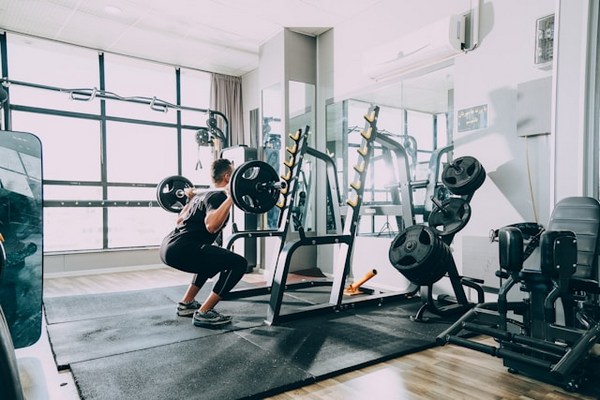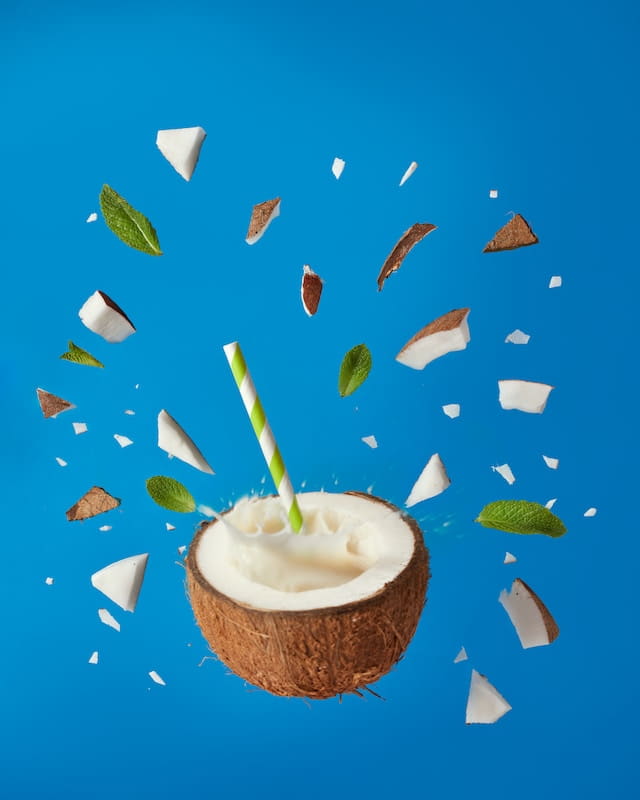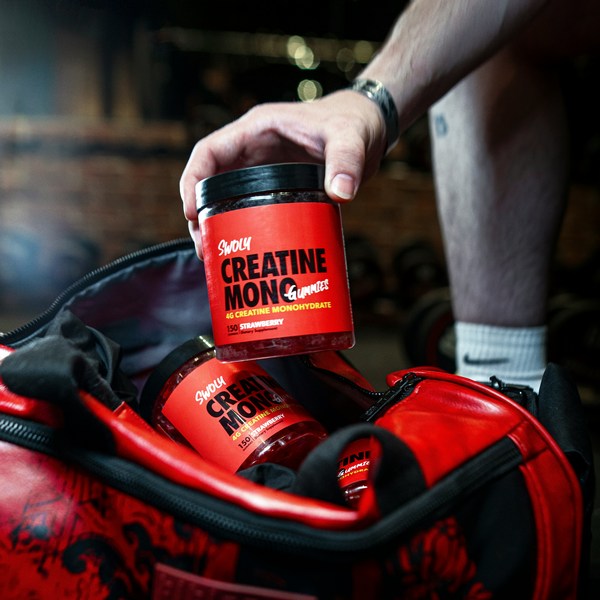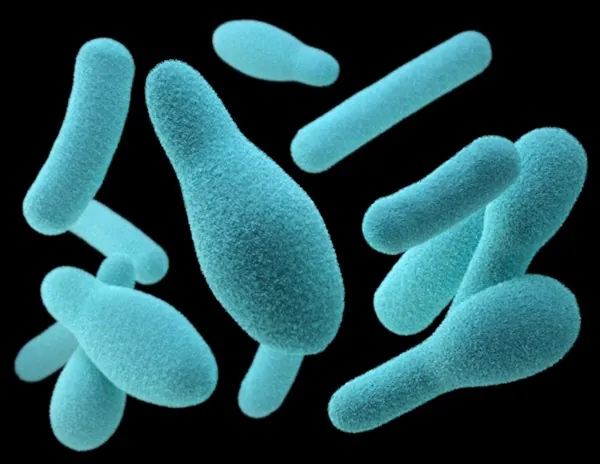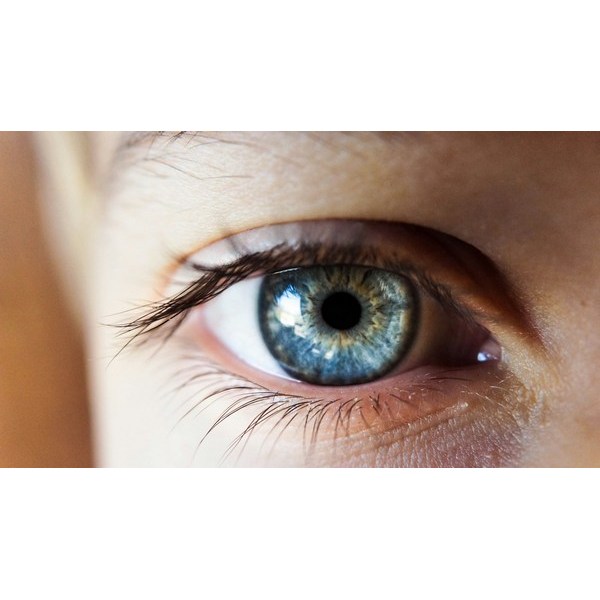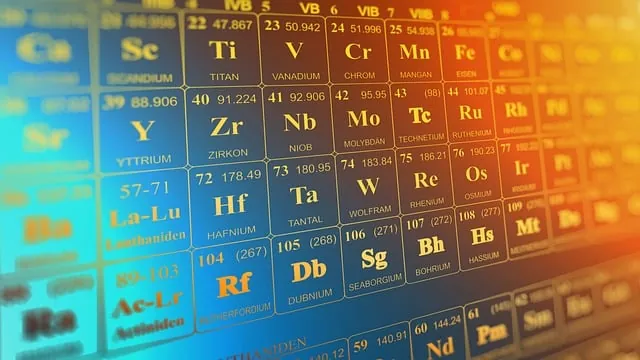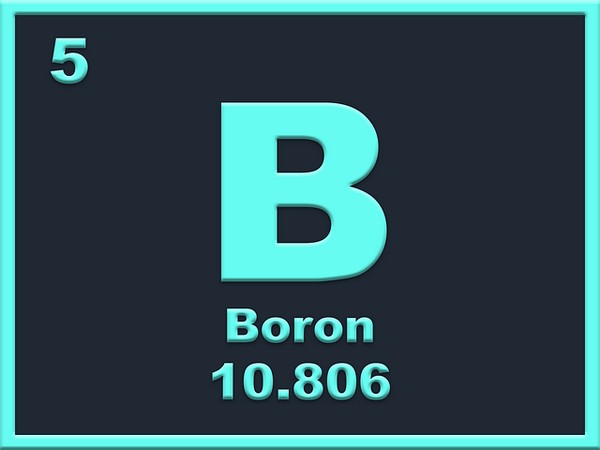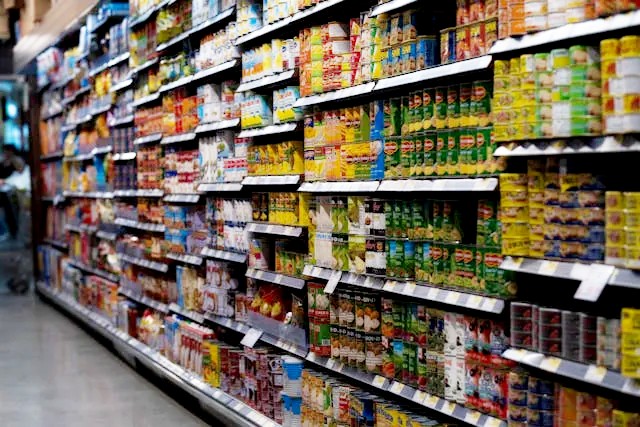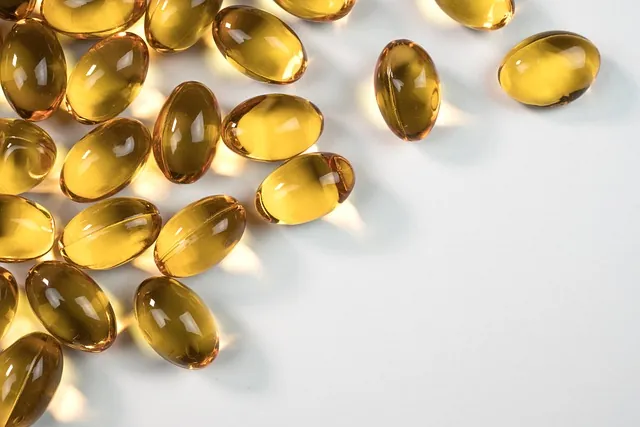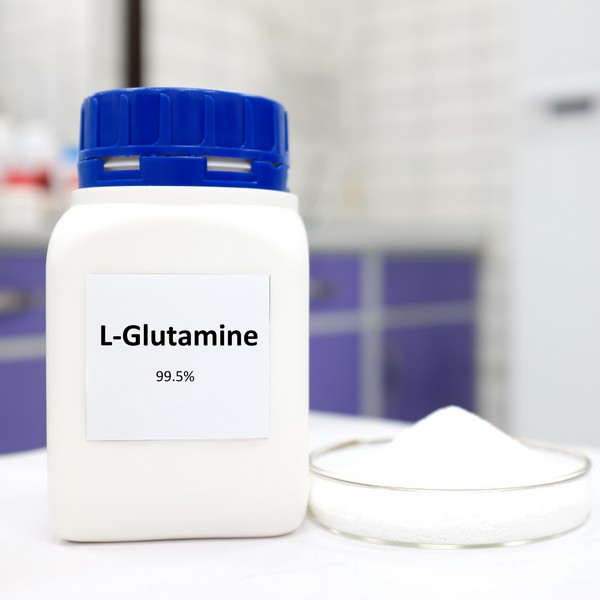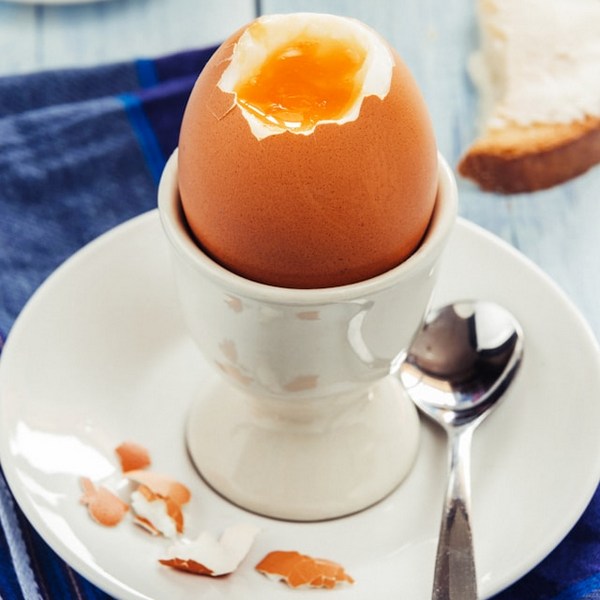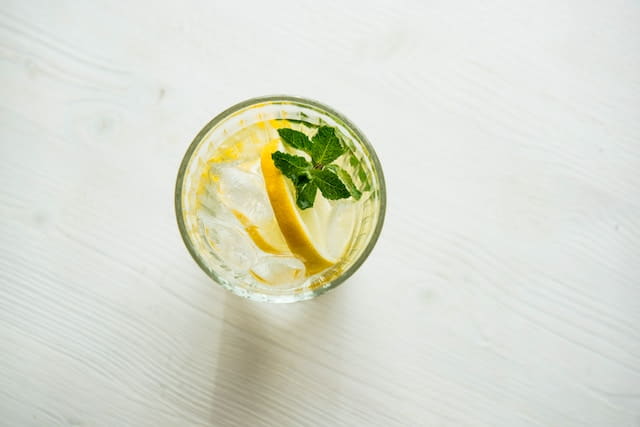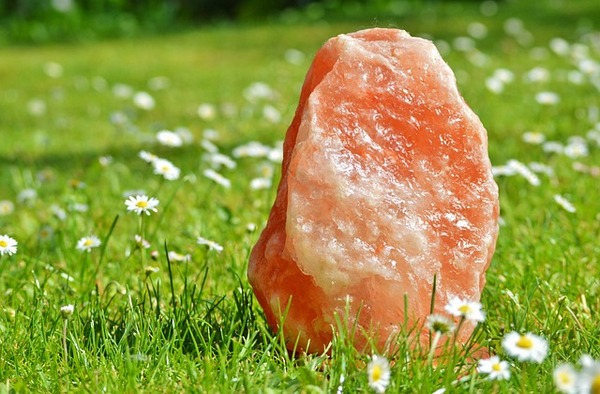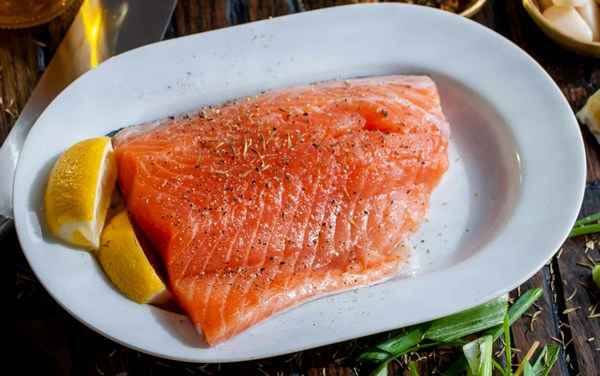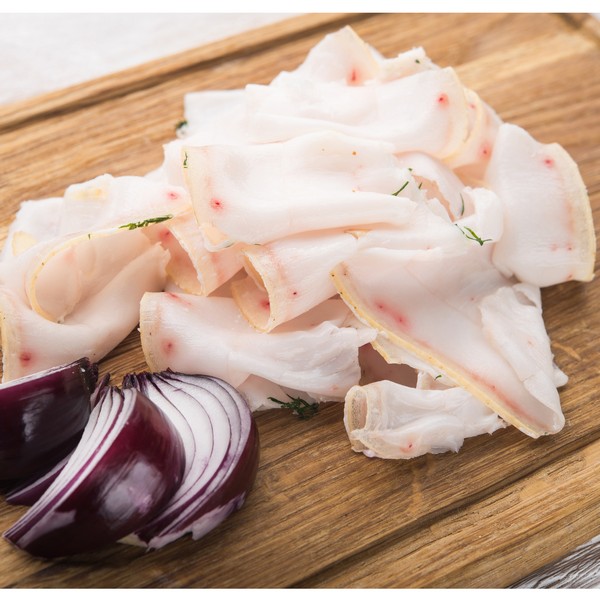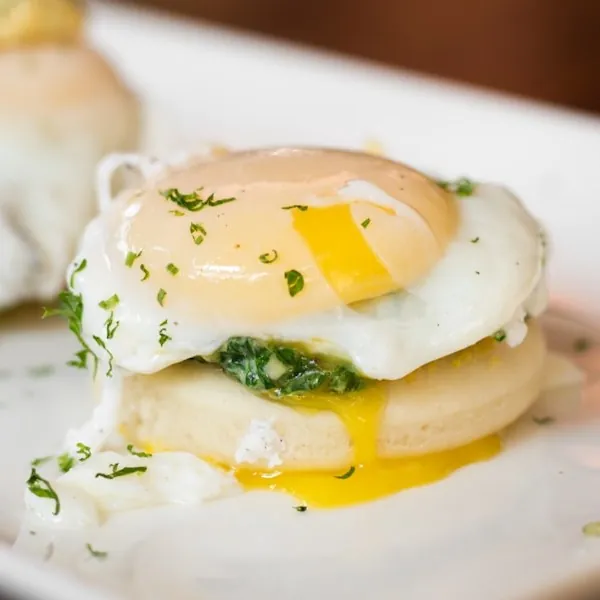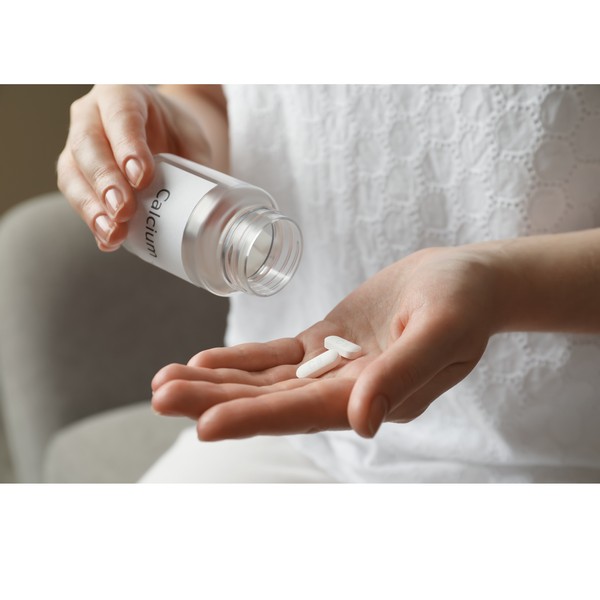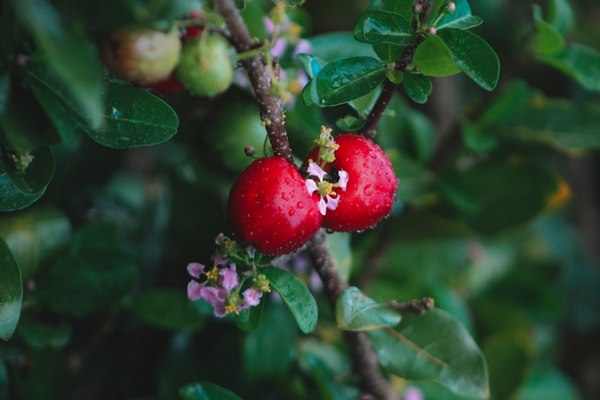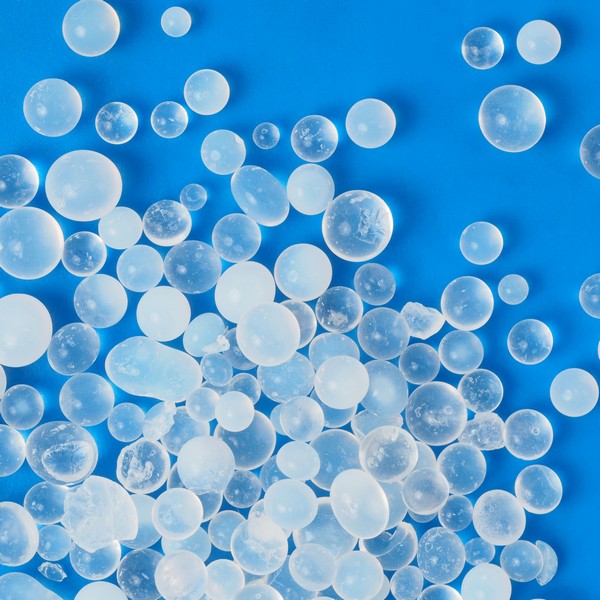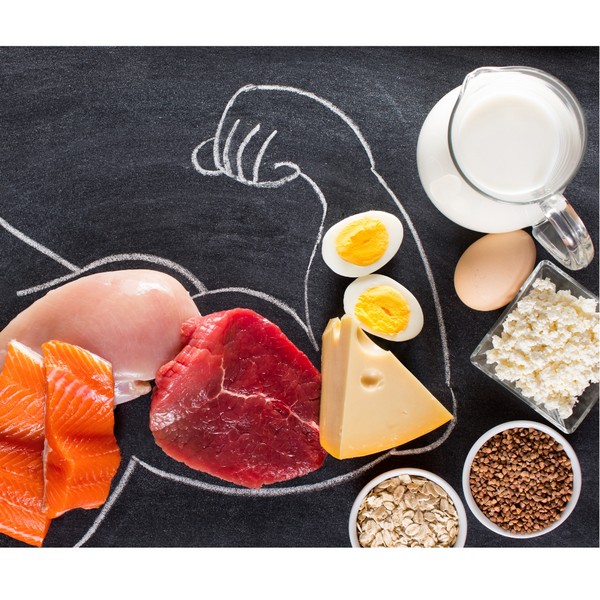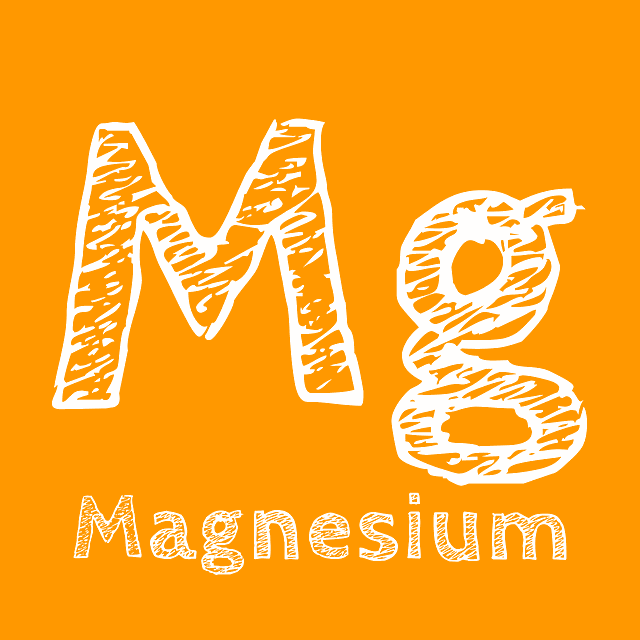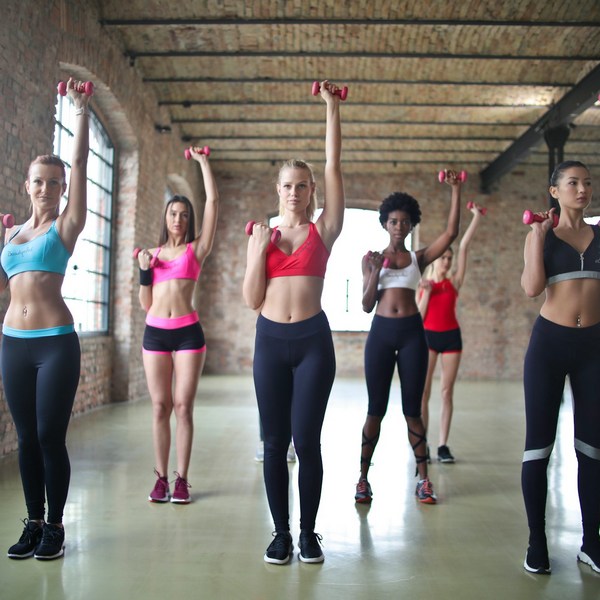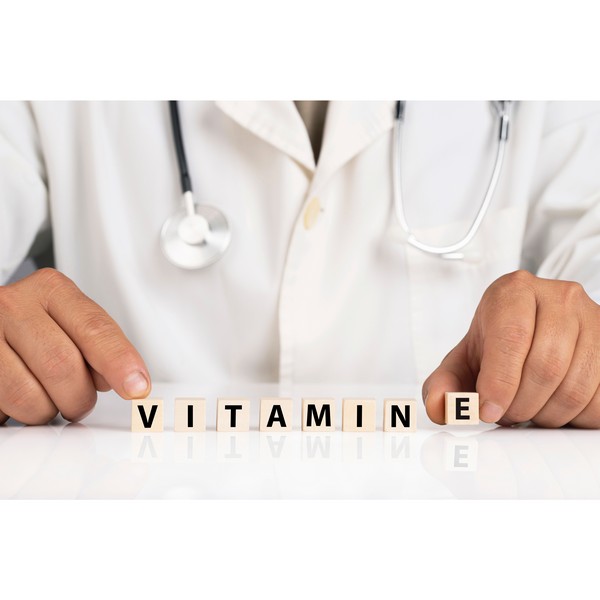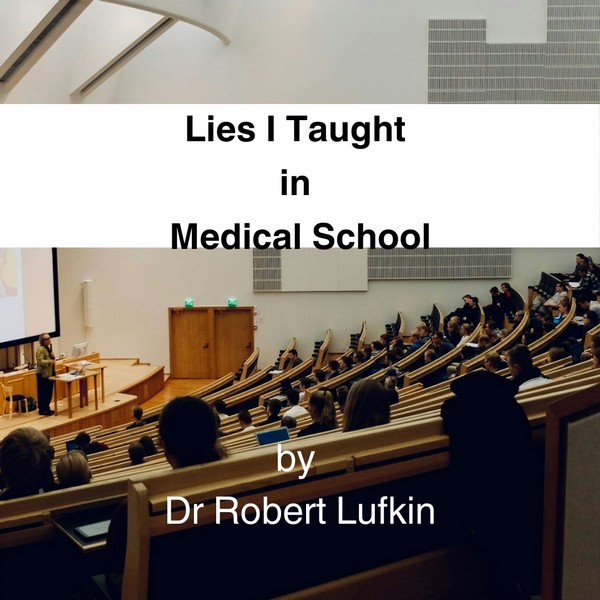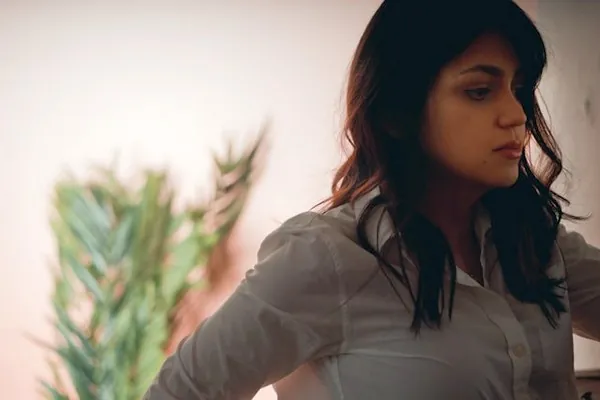Key Takeaways
- Copper is an essential trace mineral with benefits, including ceruloplasmin production, energy production and antioxidant properties.
- Copper is critical for brain health by supporting neurotransmitter synthesis and myelin sheath formation.
- Adequate copper intake can help preserve healthy hair growth, vibrant color and potentially prevent hair loss.
- It’s important to maintain levels through dietary sources or supplementation for optimal health outcomes.
Table of Contents
Copper is the most important mineral for maintaining overall health and is universally overlooked for its countless seemingly unknown benefits.
This powerful nutrient can support brain and blood health, as well as promote hair growth and preserve hair color, making it indispensable to healthy living.
Lesser-Known Health Perks of Copper
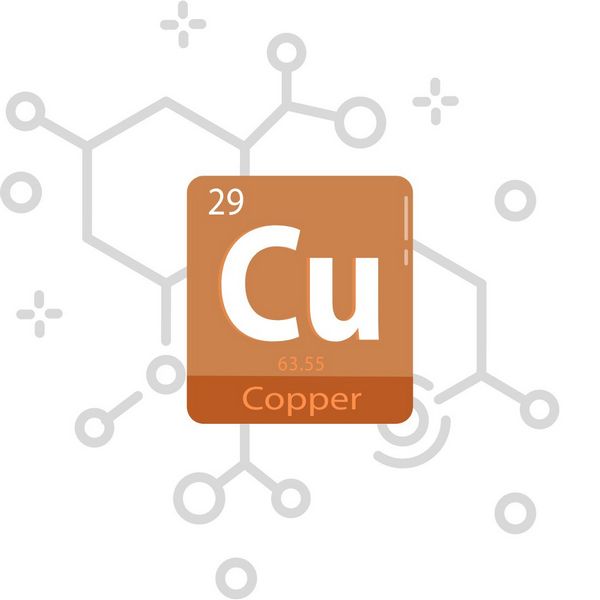
Copper is an essential trace mineral that plays a major role in maintaining good overall health. It’s important to have sufficient intake, as its deficiency can lead to reduced white blood cell count and a higher or increased risk of contracting infectious diseases.
It has powerful antioxidative properties that protect against cellular damage from environmental pollution & toxins we encounter every day.
The most remarkable benefit is its participation in synthesizing melanin, a natural pigment responsible not only for eye color but also for shielding skin from sunburns by absorbing UV radiation!
Ceruloplasmin
Ceruloplasmin is an important protein in the body, necessary for ensuring optimal functioning by providing enough copper. It plays a major role in iron metabolism and facilitates its transport to various parts of the body too.
This compound provides antioxidant protection which guards against cell damage caused by free radicals while aiding with the uptake of essential minerals like copper from dietary sources into our systems.
Thus helping to prevent conditions such as cardiovascular disease.
Energy Production
The vital role of copper in energy production cannot be undervalued. It acts as part of enzymes that help create ATP, the body’s primary source of power.
Energy is needed for every single bodily function down to the cellular level.
Antioxidant Properties
Having enough copper is essential for safeguarding the body from free radicals, oxidative stress, and other possible harms that they can bring.
By virtue of being an antioxidant itself, there are health benefits associated with incorporating copper into one’s daily life.
It has been demonstrated that sufficient amounts of this element in our systems will work towards cellular protection against these damaging elements which have been correlated with cancerous diseases as well as others.
Melanin Synthesis
Copper is elemental to melanin formation and getting a tan
— Dr Sam Soete (@sam_soete) January 15, 2024
Best sources of copper? Oysters and organ meats pic.twitter.com/NztQp7oEUQ
The body needs copper for the synthesis of melanin, a pigment that gives color to skin, hair, and eyes. This process involves tyrosinase enzyme, which requires adequate levels of this essential mineral in order to maintain its functions properly.
Melanin is typically known for skin color, but its benefits go far beyond that.
| Antioxidant Properties | Melanin combats free radicals, helping prevent cellular damage and aging. |
| Neural Protection | Neuromelanin in the brain safeguards neurons, possibly improving brain health and lowering neurological disorder risks. |
| Vision and Hearing Aid | Melanin improves vision by reducing glare and protects against certain hearing losses. |
| UV Protection | Melanin serves as natural sunscreen, protecting skin cells from UV radiation and reducing skin cancer risk. |
| Heat Damage Protection | By absorbing harmful infrared rays, melanin maintains skin integrity under extreme conditions. |
Copper’s Role in Brain Health

The importance of copper for our brain health is not always appreciated, yet it carries out vital activities such as the synthesis of neurotransmitters and the formation of myelin sheaths.
Copper deficiency can lead to harm to brain tissue and even neurodegeneration among adults.
Studies suggest that a widespread deficiency of copper in the brain may play a role in the development of Alzheimer’s disease by affecting energy use and antioxidant defenses, highlighting the potential for treatments that restore copper levels.
Neurotransmitter Synthesis
Maintaining adequate copper levels is key for the successful communication between nerve cells and promotes good brain health. Copper plays an important role in synthesizing neurotransmitters, which allow messages to be sent from one cell to another via synaptic vesicles.
It’s involved in forming complexes with these vital messengers as well. By keeping a healthy level of this essential element present within our bodies, we can ensure efficient communication processes throughout the nervous system.
Myelin Sheath Formation
Copper levels are critical for the healthy functioning of the nervous system, as it is necessary to synthesize phospholipids and create enzymes involved with myelin sheath formation.
Myelin sheaths provide insulation around nerve fibers, which is vital for the successful transmission of signals throughout the body.
Potential Links to Neurodegenerative Diseases
Copper imbalances may have a potential link to neurodegenerative diseases such as Alzheimer’s, but research is needed. An understanding of the relationship between copper levels and these disorders could lead to new treatments or preventative measures.
Possible effects on neurodegeneration due to an imbalance in copper include decreased bioavailability which could then cause protein aggregation, something associated with various neurodegenerative illnesses.
Copper and Blood Health
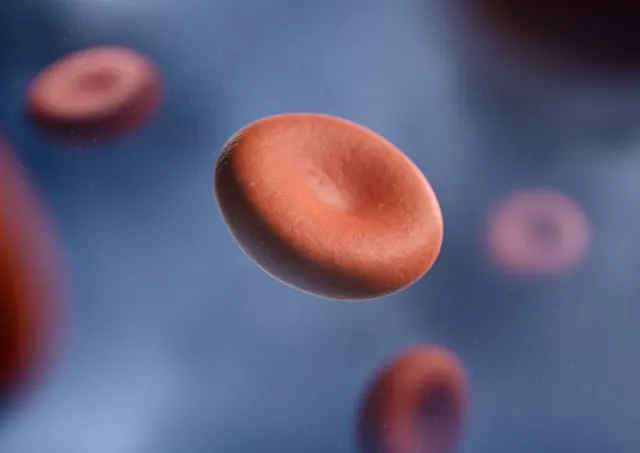
Copper offers many advantages for our well-being and blood health, including helping with red blood cell production, iron metabolism regulation, as well as retaining elasticity in our veins.
Making sure that we have adequate amounts of copper can help protect us from anemia and guarantee a sound immune system too.
Red Blood Cell Formation
A lack of copper can cause anemia, a condition stemming from insufficient production of hemoglobin, which is required for oxygen transport.
Not only does it help to prevent the onset or worsening of any potential health risks associated with low hemoglobin concentrations, but it also ensures optimal functioning within our bodies’ systems overall.
Iron Metabolism
To keep iron levels in the blood regulated, we must consume copper. A deficiency may lead to cell-level anemia, so making sure we have adequate intake through dietary sources becomes crucial for maintaining healthy red blood cells overall.
Blood Vessel Elasticity
Copper is essential for ensuring the elasticity of our blood vessels, which is required to ensure proper circulation. It facilitates the formation of collagen and elastin, both important in keeping these vascular structures strong and flexible.
If there are inadequate copper levels, then it can weaken blood vessel walls thus leading to problems with cardiovascular health.
To avoid this issue, we must maintain healthy amounts through dietary sources such as food items that have high concentrations of copper.
Cardiovascular health
Low copper content is associated with hypertension and can cause heart disease. Several people in the medical world have suggested copper supplements might help reduce heart disease and risk factors.
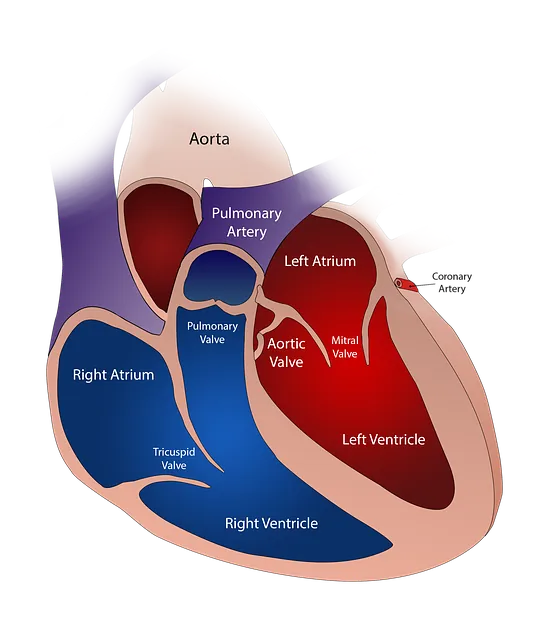
The Connection Between Copper and Hair Health
It is essential to have healthy serum copper levels in order for hair health to be preserved. Copper promotes hair growth by stimulating blood flow into the scalp, preserves its color via melanin production, and might even help prevent loss of hair.
Hair Growth
Copper is important for hair growth because it contributes to the production of proteins that build up each strand. Research has shown that elevated copper levels can support dermal fibroblast proliferation, as well as improving collagen and elastin levels, which reinforces and shields follicles from damage.
Unfortunately, a lack of copper leads to balding or prematurely greying due to an insufficient amount of protein in the formation process.
Hair Color Maintenance
In order to maintain its color, the body needs sufficient copper levels in order to produce melanin. Responsible for giving hair pigment. Eating foods that are rich in copper can help prevent early graying and dullness of your tresses as well as preserving their natural hue.
Potential Hair Loss Prevention
Evidence suggests that copper intake could potentially prevent hair loss, although research is required to support this claim. Copper’s properties of stimulating collagen production and supplying oxygen and vital nutrients to follicles may help stop the thinning of tresses.

What Causes a Copper Deficiency?
Generally, deficiency in copper results if copper consumption is inadequate.
Additionally, excess zinc can cause copper deficiencies. The reason for this is that zinc induces the production of metallothionein. This binds to copper, much more than zinc, and takes it out of the body.
You should avoid consuming zinc supplements and only get zinc from food sources.
Menkes disease
Menkes disease, a recessive disorder that affects brain function, negatively affects copper metabolism. This is possible to cause deterioration and neurological defects in infants between 3 months and 8 months.
Menkes disease is one extremely rare disease where the body cannot absorb copper properly.
A child with such a rare genetic disorder cannot live beyond three years old. Subcutaneously injected copper may be useful in restoring normal levels of brain copper levels, but how well this is done varies with the gene mutations involved.
The results of a study have indicated that treating infants at the first signs of symptoms could enhance the development of cognitive, social, and gross motor abilities in the children.
Effects of Copper Deficiency
Deficits in copper can affect nerves. The onset of neurodegeneration is associated with dietary copper imbalances. The underlying cause of the problem is the metabolism mechanism in copper that makes up the brain’s processing systems of copper.
Dietary Sources
To maintain the right amount of copper in your body, you can get it through various food sources. Such foods include
- Shellfish
- Organ Meats such as liver and kidneys
- Whole Food Vitamin C Complex as in Acerola, Camu Camu and Amla
- Dark chocolate
Supplementation
Consumption of up to 10 milligrams per day is deemed safe. If food sources are not available or copper levels are not sufficient, supplements are recommended to meet daily needs.

Copper exists in many forms but three forms in particular are highly recommended for purity, potency, and bioavailability:
Copper Peptide GHK-Cu – Skin Biology has innovative formulations in topical creams and serums
Copper Bisglycinate – Well tolerated, highly bioavailable form bonded with the glycine amino acid, which is itself highly beneficial
Copper Hydrosol – Sovereign Copper has the industry-leading blend of bio-active, positively-charged Copper I & II.

Copper is an essential trace mineral that has many health benefits. It helps to support brain and blood health, stimulate hair growth, preserve the color of hair as well as promote general well-being.
It is very important to keep blood copper levels balanced by consuming dietary sources or supplements without going overboard in order for people to benefit from its advantages and maintain overall good health.
Frequently Asked Questions
Should you take copper daily?
Consuming copper supplements as per the RDA’s recommendation (up to 10 mg daily) is safe.
What does copper do to hair?
Copper has the ability to strengthen and safeguard hair follicles, providing a boost in thickness as well as an increase in growth. Enhances collagen production and elasticity levels by introducing additional fat cells to your scalp, thus improving the overall healthiness of both hairs & scalps while being a natural solution for thinning or balding issues. Copper is indeed an essential mineral for robust healthy locks, which can be found in many foods such as shellfish, liver, and acerola.
Is copper good for the brain?
For good brain functioning, copper is a key nutrient. An imbalance of its metabolism can bring about either lack or excessive accumulation in the neural tissue with harmful repercussions on mental health. Thus, it’s critical to maintain an adequate level of copper for optimal neurological well-being and development. Copper deficiency should be avoided at all costs due to the adverse effects that this could have on the cognitive system as a whole.
What does copper do to your skin?
Copper peptides, a copper complex found in nature, possess antioxidant qualities that encourage collagen and elastin production. They are anti-inflammatory substances that hasten the healing process of cuts or abrasions leading to reduced visibility of scars and discoloration due to inflammation.
This has made copper peptides one of the most desired components for skin care items as these copper compounds contribute significantly towards enhancing complexion while also reducing signs associated with aging such as wrinkles or lines on the skin surface. Copper peptides can be employed for hair maintenance treatment too if required by an individual’s needs.
What are some lesser-known health benefits of copper?
Copper has several health advantages which are not widely known. These include aiding energy production, serving as an antioxidant for protection against damage from free radicals, helping in ceruloplasmin formation, and enabling the development of melanin.
Research
Altarelli, M., Ben‐Hamouda, N., Schneider, A. and Berger, M.M., 2019. Copper deficiency: causes, manifestations, and treatment. Nutrition in Clinical Practice, 34(4), pp.504-513.
https://pubmed.ncbi.nlm.nih.gov/31209935/
Angelova, M., Asenova, S., Nedkova, V. and Koleva-Kolarova, R., 2011. Copper in the human organism. Trakia journal of sciences, 9(1), pp.88-98.
https://www.researchgate.net/publication/284772858_Copper_in_the_human_organism
Beshgetoor, D. and Hambidge, M., 1998. Clinical conditions altering copper metabolism in humans. The American journal of clinical nutrition, 67(5), pp.1017S-1021S.
https://pubmed.ncbi.nlm.nih.gov/9587145/
Cherukuri, S., Potla, R., Sarkar, J., Nurko, S., Harris, Z.L. and Fox, P.L., 2005. Unexpected role of ceruloplasmin in intestinal iron absorption. Cell metabolism, 2(5), pp.309-319.
https://pubmed.ncbi.nlm.nih.gov/16271531/
Collins, J. F. (2021). Copper nutrition and biochemistry and human (patho)physiology. Advances in Food and Nutrition Research, 96, 311-364. https://doi.org/10.1016/bs.afnr.2021.01.005
Danks, D.M., 1980, January. Copper deficiency in humans. In Ciba Foundation Symposium 79‐Biological Roles of Copper (pp. 209-225). Chichester, UK: John Wiley & Sons, Ltd..
https://pubmed.ncbi.nlm.nih.gov/6110526/
de Romaña, D.L., Olivares, M., Uauy, R. and Araya, M., 2011. Risks and benefits of copper in light of new insights of copper homeostasis. Journal of Trace Elements in Medicine and Biology, 25(1), pp.3-13.
https://pubmed.ncbi.nlm.nih.gov/21342755/
DiNicolantonio, J.J., Mangan, D. and O’Keefe, J.H., 2018. The fructose–copper connection: Added sugars induce fatty liver and insulin resistance via copper deficiency. Journal of Metabolic Health, [online] 3(1).
https://doi.org/10.4102/jir.v3i1.43.
DiSilvestro, Robert A., et al. “A Randomized Trial of Copper Supplementation Effects on Blood Copper Enzyme Activities and Parameters Related to Cardiovascular Health.” Metabolism: Clinical and Experimental, vol. 61, no. 9, Sept. 2012, pp. 1242–46.
https://pubmed.ncbi.nlm.nih.gov/22444781/
During, A., Fields, M., Lewis, C.G. and Smith, J.C., 2000. Intestinal β-carotene 15, 15′-dioxygenase activity is markedly enhanced in copper-deficient rats fed on high-iron diets and fructose. British journal of nutrition, 84(1), pp.117-124.
https://pubmed.ncbi.nlm.nih.gov/10961168/
Fields, M., Ferretti, R.J., Reiser, S. and Smith Jr, J.C., 1984. The severity of copper deficiency in rats is determined by the type of dietary carbohydrate. Proceedings of the Society for Experimental Biology and Medicine, 175(4), pp.530-537.
https://pubmed.ncbi.nlm.nih.gov/6709648/
Fields, M., Holbrook, J., Scholfield, D., Rose, A., Smith, J.C. and Reiser, S., 1986. Development of copper deficiency in rats fed fructose or starch: weekly measurements of copper indices in blood. Proceedings of the Society for Experimental Biology and Medicine, 181(1), pp.120-124.
https://pubmed.ncbi.nlm.nih.gov/3945614/
Fields, M., Lewis, C., Beal, T., Berlin, E., Kliman, P.G. and Peters, R.C., 1989. Blood risk factor metabolites associated with heart disease and myocardial fatty acids in copper-deficient male and female rats. Proceedings of the Society for Experimental Biology and Medicine, 191(3), pp.293-298.
https://pubmed.ncbi.nlm.nih.gov/2740361/
Gaier, E. D., Eipper, B. A., & Mains, R. E. (2013). Copper signaling in the mammalian nervous system: Synaptic effects. Journal of Neuroscience Research, 91(1), 2-19.
https://pubmed.ncbi.nlm.nih.gov/23115049/
Gaware, V., 2010. Ceruloplasmin its role and significance: a review. Pathology, 5(6).
https://www.researchgate.net/publication/266249437
Harris, Z. L., Durley, A. P., Man, T. K., & Gitlin, J. D. (1999). Targeted gene disruption reveals an essential role for ceruloplasmin in cellular iron efflux. Proceedings of the National Academy of Sciences of the United States of America, 96(19), 10812-10817. https://doi.org/10.1073/pnas.96.19.10812
Hellman, N.E. and Gitlin, J.D., 2002. Ceruloplasmin metabolism and function. Annual review of nutrition, 22(1), pp.439-458.
https://pubmed.ncbi.nlm.nih.gov/12055353/
Hellman, N.E., Kono, S., Mancini, G.M., Hoogeboom, A.J., De Jong, G.J. and Gitlin, J.D., 2002. Mechanisms of copper incorporation into human ceruloplasmin. Journal of Biological Chemistry, 277(48), pp.46632-46638.
https://pubmed.ncbi.nlm.nih.gov/12351628/
Johnson, E.E. and Wessling-Resnick, M., 2012. Iron metabolism and the innate immune response to infection. Microbes and infection, 14(3), pp.207-216.
https://www.ncbi.nlm.nih.gov/pmc/articles/PMC3270215/
Kang, S.Y., Kim, H.B. and Sunwoo, S., 2020. Association between anemia and maternal depression: a systematic review and meta-analysis. Journal of psychiatric research, 122, pp.88-96.
https://pubmed.ncbi.nlm.nih.gov/31945502/
Klevay, L.M., 2007. Copper deficiency, lead, and paraoxonase. Environmental Health Perspectives, 115(7), pp.A341-A342.
https://www.ncbi.nlm.nih.gov/pmc/articles/PMC1913565/
Klevay, L.M., 2008. Alzheimer’s Disease as Copper Deficiency. Medical Hypotheses, vol. 70, no. 4, 2008, pp. 802–07. https://pubmed.ncbi.nlm.nih.gov/17928161/
Klevay, L.M., 2011. Is the Western diet adequate in copper?. Journal of Trace Elements in Medicine and Biology, 25(4), pp.204-212.
https://doi.org/10.1016/j.jtemb.2011.08.146
Kumar, N., 2006, October. Copper deficiency myelopathy (human swayback). In Mayo Clinic Proceedings (Vol. 81, No. 10, pp. 1371-1384). Elsevier.
https://pubmed.ncbi.nlm.nih.gov/17036563/
Linder, M.C., 2016. Ceruloplasmin and other copper binding components of blood plasma and their functions: an update. Metallomics, 8(9), pp.887-905.
Martin, F., Linden, T., Katschinski, D.M., Oehme, F., Flamme, I., Mukhopadhyay, C.K., Eckhardt, K., Tröger, J., Barth, S., Camenisch, G. and Wenger, R.H., 2005. Copper-dependent activation of hypoxia-inducible factor (HIF)-1: implications for ceruloplasmin regulation. Blood, 105(12), pp.4613-4619.
Myint, Z.W., Oo, T.H., Thein, K.Z., Tun, A.M. and Saeed, H., 2018. Copper deficiency anemia. Annals of hematology, 97, pp.1527-1534.
Opsahl, W., et al. “Role of Copper in Collagen Cross-Linking and Its Influence on Selected Mechanical Properties of Chick Bone and Tendon.” The Journal of Nutrition, vol. 112, no. 4, Apr. 1982, pp. 708–16. PubMed,
https://doi.org/10.1093/jn/112.4.708.
Petrak, J. and Vyoral, D., 2005. Hephaestin—a ferroxidase of cellular iron export. The international journal of biochemistry & cell biology, 37(6), pp.1173-1178.
Prohaska, J. R. (2011). Impact of Copper Limitation on Expression and Function of Multicopper Oxidases (Ferroxidases). Advances in Nutrition, 2(2), 89-95. https://doi.org/10.3945/an.110.000208
Prohaska, J.R., 2014. Impact of copper deficiency in humans. Annals of the New York Academy of Sciences, 1314(1), pp.1-5.
https://pubmed.ncbi.nlm.nih.gov/24517364/
Ross, A. Catharine, et al. Modern Nutrition in Health and Disease: Eleventh Edition. Wolters Kluwer Health Adis (ESP), 2012. jhu.pure.elsevier.com, https://jhu.pure.elsevier.com/en/publications/modern-nutrition-in-health-and-disease-eleventh-edition.
Sampath, P., Mazumder, B., Seshadri, V., Gerber, C.A., Chavatte, L., Kinter, M., Ting, S.M., Dignam, J.D., Kim, S., Driscoll, D.M. and Fox, P.L., 2004. Noncanonical function of glutamyl-prolyl-tRNA synthetase: gene-specific silencing of translation. Cell, 119(2), pp.195-208.
Scholefield, M., Church, S.J., Xu, J., Patassini, S., Roncaroli, F., Hooper, N.M., Unwin, R.D. and Cooper, G.J., 2021. Widespread decreases in cerebral copper are common to Parkinson's disease dementia and Alzheimer's disease dementia. Frontiers in aging neuroscience, 13, p.641222.
Shiva, S., Wang, X., Ringwood, L.A., Xu, X., Yuditskaya, S., Annavajjhala, V., Miyajima, H., Hogg, N., Harris, Z.L. and Gladwin, M.T., 2006. Ceruloplasmin is a NO oxidase and nitrite synthase that determines endocrine NO homeostasis. Nature chemical biology, 2(9), pp.486-493.
Tsugutoshi, A.O.K.I., 2004. Copper deficiency and the clinical practice. Trace Elements, 365.
Twomey, P.J., Viljoen, A., House, I.M., Reynolds, T.M. and Wierzbicki, A.S., 2005. Relationship between serum copper, ceruloplasmin, and non–ceruloplasmin-bound copper in routine clinical practice. Clinical Chemistry, 51(8), pp.1558-1559.
Uauy, R., Olivares, M. and Gonzalez, M., 1998. Essentiality of copper in humans. The American journal of clinical nutrition, 67(5).
Uriu-Adams, J.Y. and Keen, C.L., 2005. Copper, oxidative stress, and human health. Molecular aspects of medicine, 26(4-5), pp.268-298.
Vashchenko, G., & A. MacGillivray, R. T. (2013). Multi-Copper Oxidases and Human Iron Metabolism. Nutrients, 5(7), 2289-2313. https://doi.org/10.3390/nu5072289
Wierzbicka, D. and Gromadzka, G. (2014). Ceruloplasmin, hephaestin and zyklopen: the three multicopper oxidases important for human iron metabolism. Postępy Higieny i Medycyny Doświadczalnej, 68, Walter de Gruyter GmbH., pp.912–924. [Online].
doi:10.5604/17322693.1111136
Williams, D.M., 1983, April. Copper deficiency in humans. In Seminars in hematology (Vol. 20, No. 2, pp. 118-128).
Xu, J., Begley, P., Church, S.J., Patassini, S., McHarg, S., Kureishy, N., Hollywood, K.A., Waldvogel, H.J., Liu, H., Zhang, S. and Lin, W., 2016. Elevation of brain glucose and polyol-pathway intermediates with accompanying brain-copper deficiency in patients with Alzheimer’s disease: metabolic basis for dementia. Scientific reports, 6(1), p.27524.
Xu, J., Church, S.J., Patassini, S., Begley, P., Waldvogel, H.J., Curtis, M.A., Faull, R.L., Unwin, R.D. and Cooper, G.J., 2017. Evidence for widespread, severe brain copper deficiency in Alzheimer's dementia. Metallomics, 9(8), pp.1106-1119.
Zatta, P. and Frank, A., 2007. Copper deficiency and neurological disorders in man and animals. Brain Research Reviews, 54(1), pp.19-33.
Zhang, L., Ward, M.L., Phillips, A.R., Zhang, S., Kennedy, J., Barry, B., Cannell, M.B. and Cooper, G.J., 2013. Protection of the heart by treatment with a divalent-copper-selective chelator reveals a novel mechanism underlying cardiomyopathy in diabetic rats. Cardiovascular diabetology, 12, pp.1-17.
Zhang, S., Liu, H., Amarsingh, G.V., Cheung, C.C., Hogl, S., Narayanan, U., Zhang, L., McHarg, S., Xu, J., Gong, D. and Kennedy, J., 2014. Diabetic cardiomyopathy is associated with defective myocellular copper regulation and both defects are rectified by divalent copper chelation. Cardiovascular diabetology, 13, pp.1-18.
Trimethylglycine TMG: Betaine Anhydrous Explained
Key Takeaways Betaine Anhydrous (TMG) is a compound found naturally in various foods and offers several health benefits. TMG supports liver health by reducing fatty…
Benefits of Nutritional Yeast
Key Takeaways Nutritional yeast is a rich source of vitamins and minerals. It supports immune function and promotes skin health. Its cheesy flavor makes it…
Medium Chain Triglycerides (MCTs): Uncovering 5 Health Benefits
This potent, natural source of energy has gained considerable attention in recent years for its impressive array of benefits. MCT oil is a versatile addition…
CoQ10: What Is It and Why Is It Important?
Key Takeaways CoQ10 (Coenzyme Q10) is an antioxidant produced by the body, essential for energy production in cells. Levels of CoQ10 naturally decrease with age…
Bee Pollen: Nature’s Secret Superfood
Key Takeaways Bee pollen is packed with essential nutrients and offers numerous health benefits. It supports immune function, boosts energy, and promotes overall well-being. Adding…
ALA vs. DHA & EPA Omega-3: Why Source Matters
Key Takeaways ALA (Alpha-Linolenic Acid) is found in flaxseeds, chia seeds, and walnuts, but converts poorly to DHA and EPA. DHA and EPA are critical…
Creatine Myths Debunked: Separating Fact from Fiction
Key Takeaways Common myths about creatine, such as it causing kidney damage, weight gain, and being a steroid, are widespread but unsupported by scientific evidence….
Postbiotics: What They Are and Why They Are Important
Key Takeaways Postbiotics 101: They’re beneficial by-products from probiotics that consume prebiotics Boosts Immunity: Postbiotics sharpen your immune system, helping fight off pathogens and reducing…
Vitamin A (Retinol): Essential Nutrient for Health
Key Takeaways: Natural Vitamin A, also known as Retinol, is crucial for vision, immune function, and skin health. Retinol is essential for healthy vision, particularly…
Berberine Has 11 More Incredible Benefits Than You Thought
Berberine is a compound found in several plants that has been used for centuries in traditional Chinese medicine and Ayurveda. It has recently gained popularity…
Iron Overload: Symptoms & Prevention Tips
Key Takeaways: Iron overload happens when the body absorbs excessive iron, which can damage organs. Common symptoms include fatigue, joint pain, and skin changes. Early…
11 Electrifying Health Benefits of Trace Minerals
What are Trace Minerals?The Major Roles of Trace MineralsSources of Trace MineralsDeficiencies in Trace MineralsThe Impact of Trace Minerals on Specific Health ConditionsFrequently Asked Questions…
Taurine: The Mighty Amino Acid for Optimal Health
Key Takeaways Taurine supports heart health, regulates blood pressure, and reduces oxidative stress. Essential for muscle function, brain health, and cognitive function. Aids in insulin…
Boron: Benefits of a Lesser-Known Mineral
Key Takeaways Boron is a trace mineral with significant health benefits. It supports brain function, bone health, and hormonal balance. Understanding boron’s role can improve…
Spirulina: Health Benefits and Uses
Key Takeaways Spirulina boosts immune function with its high nutrient content and antioxidant properties. Rich in proteins and essential vitamins, enhances overall nutrition. Helps reduce…
The Impact of Ultra-Processed Foods on Your Wellbeing
Every bite we take is a step toward either wellness or illness. In our fast-paced world, ultra-processed foods have become a staple, silently shaping our…
Potassium: Benefits & Sources
Key Takeaways Potassium is essential for regulating fluid balance, nerve signals, and muscle function. It supports heart health and helps maintain proper blood pressure. Adequate…
How Cod Liver Oil Can Transform Your Health and Wellness
Cod liver oil has been used for centuries as a natural remedy for various health conditions. Packed with essential nutrients and fatty acids, cod liver…
L-Glutamine and Gut Health: Benefits and Side Effects
Key Takeaways L-Glutamine is essential for gut health. Benefits include improved digestion and reduced inflammation. Potential side effects are rare but can occur in high…
Cholesterol Misconceptions: Separating Fact from Fiction
Key Takeaways: High inflammation and blood pressure are major risk factors for heart disease. Cholesterol is vital for hormone production, cell membrane structure, and digestion,…
How Collagen Supports Healthy Skin, Joints, and More
Key Takeaways Collagen is the most abundant protein in the body, supporting the structure of skin, bones, and connective tissues. It helps maintain skin elasticity,…
Do This! The Ultimate Guide to Fasting Safely and Effectively
In our increasingly busy lives, finding time to take care of our bodies can often take a backseat. One method that has gained attention recently…
Keto Diet 101: A Complete Beginner’s Guide
Key Highlights The ketogenic diet is a low-carb, high-fat diet that can lead to weight loss and has many health benefits. By reducing carbohydrate intake…
Benefits of Sea Moss Explained
Key Takeaways Rich in Nutrients: Sea moss is packed with essential vitamins, minerals, and antioxidants, supporting overall health and wellness. Supports Immune Function: Its high…
What You Need to Know About Salt and Your Health
Table of ContentsThe Health Benefits of Unrefined Sea SaltElectrolyte BalanceMineral ContentImproved HydrationBoosted Energy LevelsImmune SupportImproved DigestionBalanced pH LevelsReduced Water RetentionHeart Health SupportStronger Bones and TeethEnhanced…
6 Best Natural Ways to Manage Your Blood Sugar: A Quick & Easy Guide
1. Intermittent fasting2. Exercise3. Dietary fiber4. Sleep5. Weight loss6. SupplementationBioclinic NaturalsPGX BiotiquestSugar Shift Every time you eat it, it’s plotting something sinister. Sugar isn’t as…
Healthy Fat: is Butter Better?
Key Takeaways Saturated fats, like those found in butter, may not be as harmful as once thought and can be part of a healthy diet….
8 Key Signs of Nutrient Deficiency
Key Takeaways Magnesium: A multitasker that aids in over 300 biochemical reactions in the body. Copper: Supports neurological function, cardiovascular and immune system health, iron…
Carnivore Diet: Benefits, Risks, Food List & More
Key Takeaways The carnivore diet is a keto diet that only allows for animal-based foods, and has potential health benefits. Tips for success include hydrating,…
Actual Superfoods: Real Foods You Should Be Eating
Key Takeaways Superfoods are nutrient-dense foods, offering essential vitamins, minerals, and fats. Prioritize high-quality sources for optimal nutrition. They support overall health, boost energy, and…
TUDCA Benefits for Health
Key Takeaways TUDCA promotes liver health, aiding cell protection and repair. Enhances digestion by improving bile flow and supporting gut health. May protect brain health…
Grains & Legumes Secretly Harming Your Health? Find Out Now!
Key Takeaways: – Grains and legumes contain antinutrients like lectins and phytic acid, which can interfere with nutrient absorption. – These foods may trigger digestive…
5 Major Benefits of Omega-3 Fatty Acids
Key Takeaways Omega-3 fatty acids support heart health by reducing triglycerides and lowering blood pressure. They play an important role in brain function and development,…
Tallow: Benefits, Uses, and Nutrition
Key Takeaways: Tallow is a nutrient-rich animal fat with many practical uses. It contains valuable vitamins such as A, D, E, and K. Tallow is…
Eggs: A Comprehensive Guide
Key Highlights Eggs are a nutritional powerhouse, containing all the essential vitamins and minerals needed for overall health. Vital role in a balanced diet, providing…
Natural Treatment for Irritable Bowel Syndrome (IBS): Effective Remedies Explored
Understanding IBSSymptoms of IBSRole of Diet in IBSNatural Remedies for IBSSupplements for IBSRole of Probiotics in IBSFrequently Asked Questions Understanding IBS Irritable Bowel Syndrome (IBS)…
Zinc Supplements: Risks and Dangers
Key Takeaways Zinc supports immunity, wound healing, and cell growth. High zinc supplement doses can cause health problems. Always consult a healthcare provider before taking…
Calcium Supplements: What You Need to Know
Key Takeaways Calcium supplements have been linked to heart disease and kidney stones. Excess calcium from supplements can lead to imbalances and health issues. Natural…
Whole Food Vitamin C Complex: Expert Tips for Health
Key Highlights Whole food vitamin C complex is essential for a strong immune system and overall health. Unlike synthetic ascorbic acid, whole food vitamin C…
Red Palm Oil: Unveiling The Potent Health Benefits
Struggling to find the right oil for your health and kitchen? Red palm oil is packed with nutrients that might just be what you need….
Increase GLP-1 Agonists Naturally
Key Takeaways: GLP-1 agonists regulate appetite, insulin production, and blood sugar levels. Regular exercise and quality sleep maintain optimal GLP-1 levels. High-protein, low-carb diets effectively…
Allulose: The Best Sugar Alternative
Key Takeaways Allulose is a low-calorie sweetener found naturally in some fruits. It does not raise blood sugar levels, making it suitable for diabetics. Allulose…
Silica: for Healthier Skin, Hair, and Nails
Key Takeaways: Silica supports strong and healthy skin, hair, and nails. It promotes bone health by boosting collagen production. Silica helps improve joint flexibility and…
Is Eating Sugar Really That Bad For Your Health?
Should You Really Be Concerned? In short, YES! Thank you, that’s all folks, and do have a good evening. Seriously though, extensive research has established…
Liver: 5 Surprising Benefits Backed by Science
Hold on! Don’t run away! You need to read this. Liver is a highly nutritious organ meat that is often overlooked in modern diets. Packed…
Protein: You probably need more
Key Takeaways Protein is needed for building and repairing body tissues. It supports muscle growth, immune function, and hormone production. Bioavailable sources of protein include…
13 Most Dangerous Foods Revealed
Key Highlights Fugu, or pufferfish, is one of the most poisonous foods in the world, with its organs containing a neurotoxin that can paralyze motor…
5-HTP: Natural Ways to Boost Serotonin and Improve Mood
Key Takeaways: 5-HTP is a natural compound that helps boost serotonin levels in the brain. It can support mood regulation, sleep improvement, and stress reduction….
Magnesium: Better Sleep, Stress Relief and More
How Stabilized Rice Bran Supports Digestive & Heart Health
Key Takeaways – Stabilized rice bran is a nutrient-rich source of vitamins, minerals, and antioxidants. – The stabilization process prevents rancidity, making it a long-lasting…
L-Carnitine: Benefits, Dosage, and Side Effects
Key Takeaways L-Carnitine supports fat metabolism and energy production. Benefits include enhanced exercise performance and improved heart health. Proper dosing minimizes potential side effects. Understanding…
Conjugated Linoleic Acid (CLA): Benefits & Sources
Key Takeaways CLA is a type of fatty acid found primarily in animal products like beef and dairy. Known for potential benefits such as weight…
Vitamin E Complex
Key Takeaways Vitamin E is a powerful antioxidant that protects cells from oxidative damage, reducing the risk of chronic diseases. The vitamin E complex includes…
